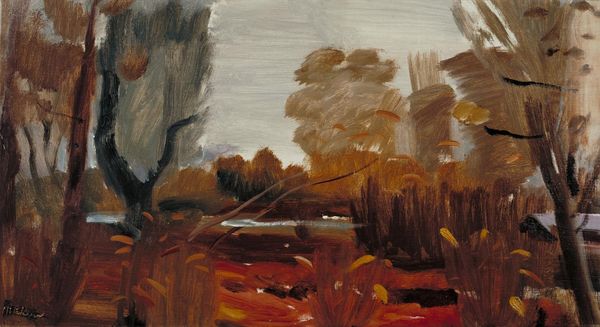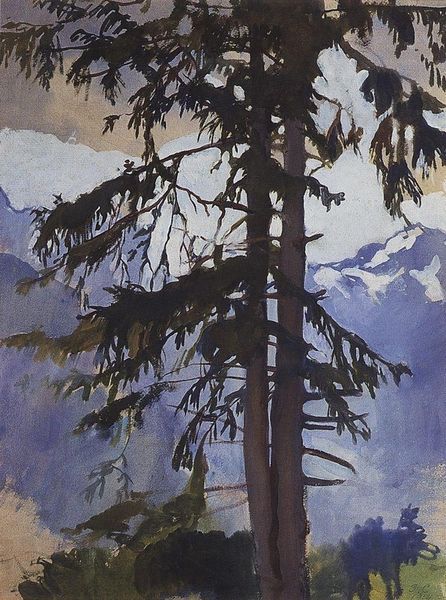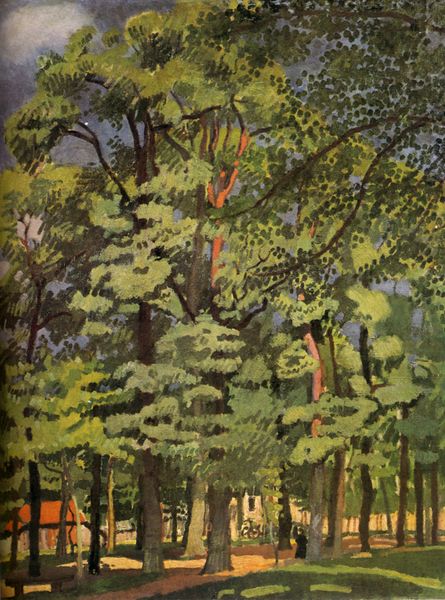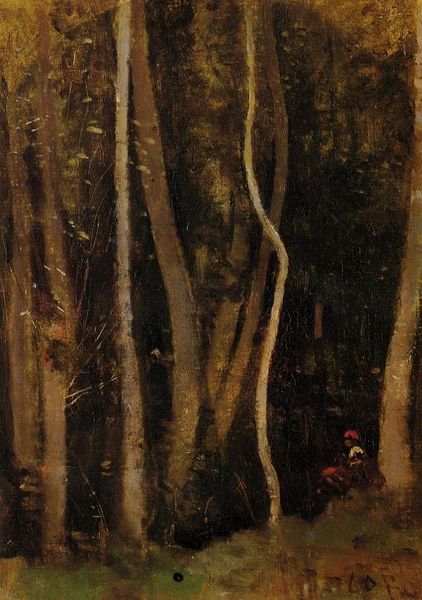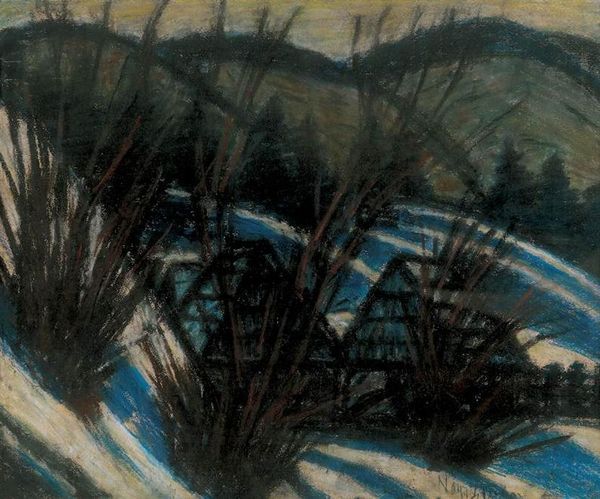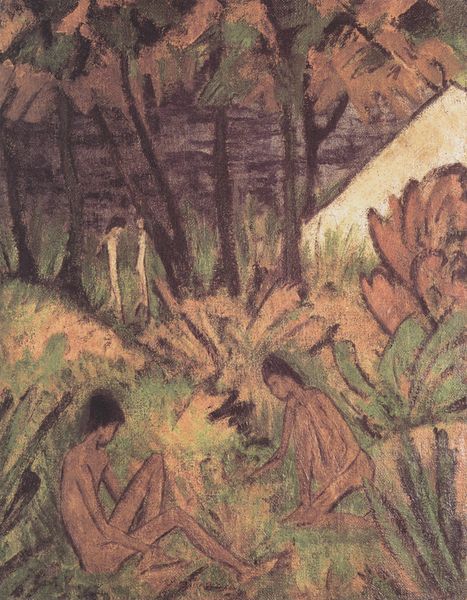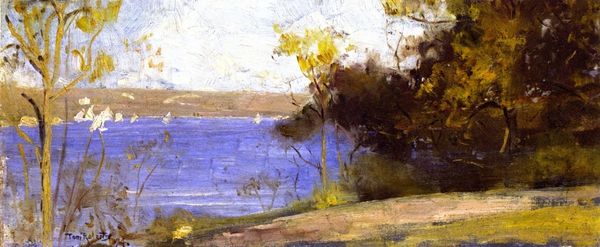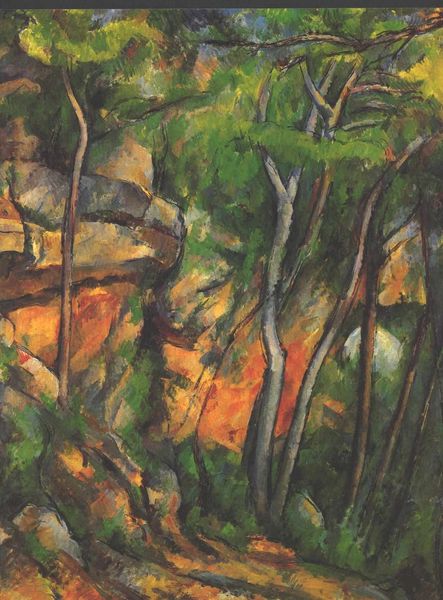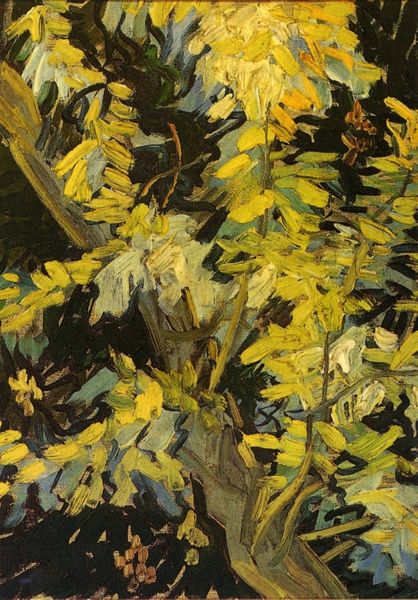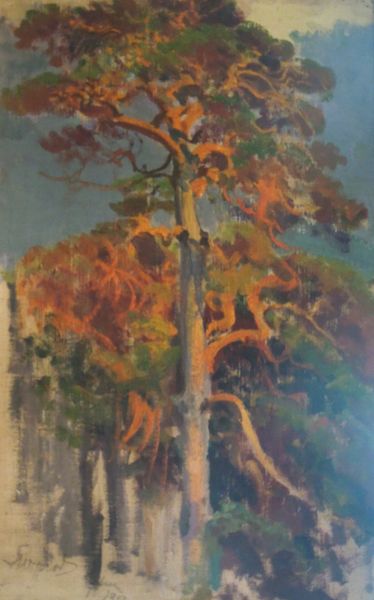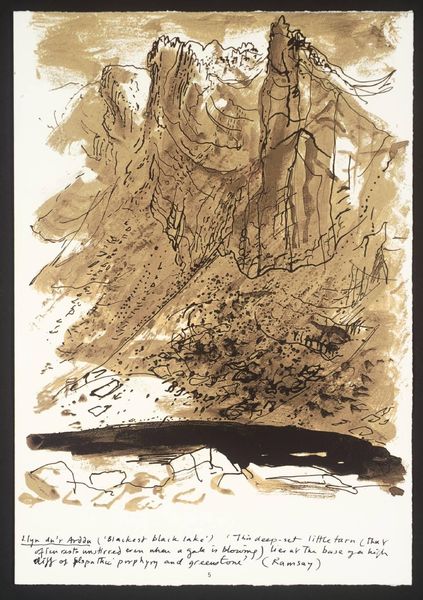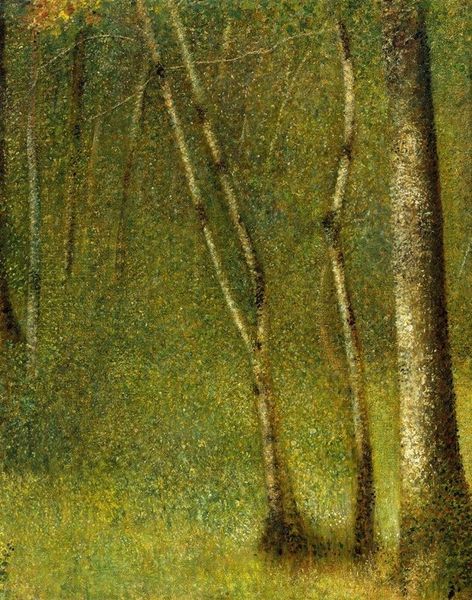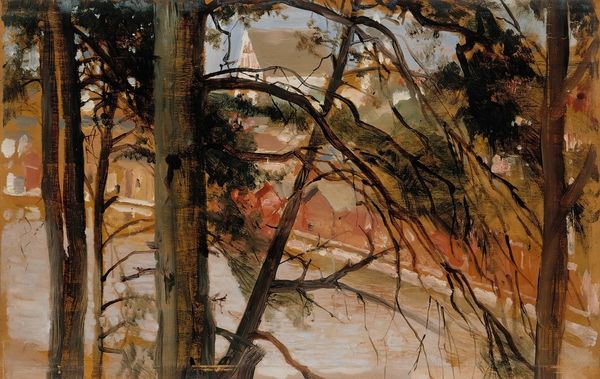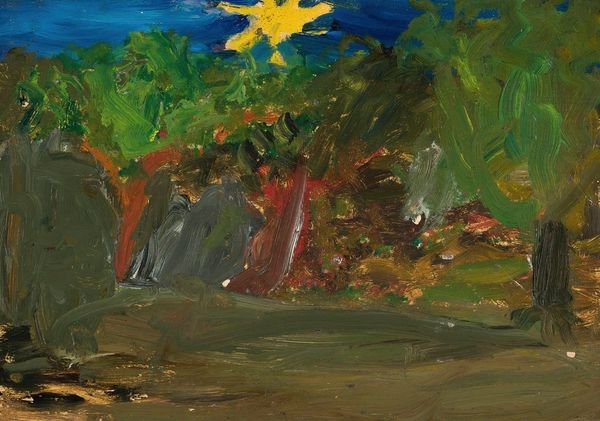
Copyright: Public domain US
Curator: Ah, this watercolour, "Autumn Landscape," painted by Zinaida Serebriakova in 1914, possesses such a compellingly melancholy air. Editor: I agree. The paper support and use of watercolor, particularly en plein air, suggests an accessibility and immediacy that softens the intensity of the approaching winter the painting suggests. There's a sense of efficient capture here; she seems focused on the effects of weather. Curator: Absolutely. But consider the deeper resonance of autumn. It's not just about dying leaves; it signifies decline, contemplation, a preparation for a dormant period, echoed across cultures. Do you think Serebriakova uses this traditional symbology here, maybe reflective of broader social moods? Editor: Interesting point, especially for the period. Watercolor's portable nature meant she could work on location, rapidly and efficiently, capturing a fleeting moment under rapidly changing skies. I wonder about the commercial market for such works – the relative cheapness of materials, and ease of production, suggests to me they are aimed at a different market than oils of similar sizes. Curator: The forest itself acts as a powerful, almost archetypal symbol across folklore, representing both danger and refuge, isn’t it? Note, here, the somber palette of blues and browns evokes the emotional gravity of the landscape, a feeling which goes beyond simple plein air impressions. Editor: Yes, but notice also that this isn't pure documentation. It is interpretive work on her part. What type of pigments were accessible to Serebriakova in 1914 would greatly determine her range of coloration in rendering the dark mood you highlight. Did she choose particular materials based on a price point and desired affect, or for other social reasons? The choice of support alone is fascinating in implying certain artistic values or economic realities. Curator: A complex question. Perhaps these starker colors were an active choice—to draw attention to this transitory state, highlighting what is lost and what lingers? Or if it's about economic constrictions, doesn't the use of watercolor give a raw feeling to this landscape? Editor: Perhaps it's a synthesis: Material limitations inspire novel approaches and imbue symbolic layers into both the process and its representation. It might reveal new visual approaches which would otherwise remain concealed. Curator: Yes, a perfect combination. Thank you. Editor: A worthwhile exploration.
Comments
No comments
Be the first to comment and join the conversation on the ultimate creative platform.
